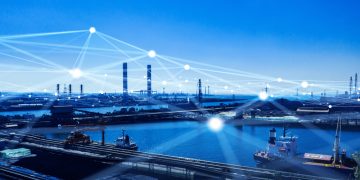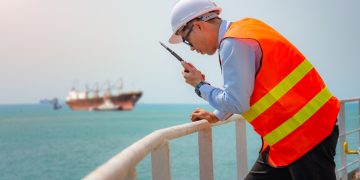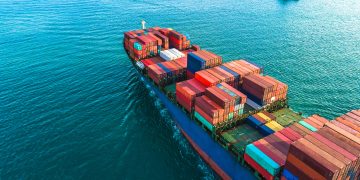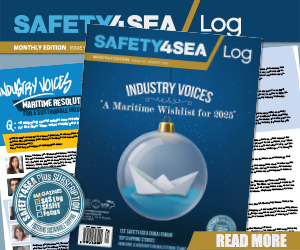On 11 March 2022, a VPS Bunker Alert informed about chlorinated hydrocarbons being found and identified in Heavy Fuel Oil (HSFO) deliveries recently made in Singapore. With shipping worried about the situation’s consequences, Bureau Veritas VeriFuel answered some of the most common questions regarding this issue.
Q: What do you need to know about this contamination issue?
The high sulphur fuel batches with chlorinated compounds from Singapore, were delivered in February and March 2022. The component found in the highest concentration is 1,2-dichloroethane which has been found up to 5000 ppm (=0.5% m/m).
Chlorinated hydrocarbons are widely used as solvents and raw materials for the synthesis of various products, such as cleaning agents, pesticides and poly vinyl chloride.
As of today, close to 30 operators are affected (some with multiple vessels). Two suppliers and many barges were involved.
Q: What did the ships observe?
The ships experienced engine fuel pump issues and severe filter clogging issues. In the worst cases, the ships lost power and had to replace fuel pumps at sea.
Q: What does it take to analytically identify the contaminants in the bunker sample?
These components cannot be detected via the standard 8217 analysis but require GC/MS.
The only industry acknowledged standardised method for GCMS, ASTM D7845, covers the quantitative determination of a variety of chemical species (including chlorinated hydrocarbons) in marine fuel oil (bunker fuel oil) by gas chromatography/mass spectrometry.
Q: Was there any prior experience with these components in bunkers?
Yes, back in 2004 in Fujairah, about 20 ships experienced damage to fuel valves as well as sticking of the engine fuel pumps, plunger and barrels followed by rapid failure of the fuel pump units.
Main components identified at that time were:
- 1,2-dichloroethane;
- 1,1,2-trichloroethane.
Despite the presence of these components, some ships managed to consume the fuel at the time without any operational issues.
Q: Is there any correlation with the Houston 2018 contamination issue?
As per the statement prepared by CIMAC WG7 Fuels, no final and concrete conclusion could be made as to what specifically in the fuel formulation the Houston incidents.
The Singapore situation is linked to chlorinated hydrocarbons whereas, in the Houston case, there is yet to be a definitive culprit. Singapore MPA is currently investigating the case, requesting that the specific fuel is no longer supplied and exploring the cause of the contamination.
Both endemic cases were linked to high sulphur fuels.
Q: Are chlorinated compounds normally included in crude oil?
The literature ranges normal values between one and five ppm.
Q: Is the problem gone for now?
No one can say for sure. Debunkering operations of the contaminated fuel will take place is various areas, i.e. spread around the world. In addition, there is a risk (as happened in Houston in 2018) that the remaining fuel batch may be transferred to other geographical areas for further blending in order to dilute.
Taking quality assurance seriously, Singapore MPA is currently investigating the case having contacted the bunker suppliers to ensure that the specific batch of fuel is no longer supplied.
Q: Anything else to be cautious of when consuming fuels with chlorinated hydrocarbons?
The fuels containing these components have viscosities (@50 ⁰C) in the 300-380 cSt range and therefore require heating to 98 ⁰C in the separators and about 130 ⁰C at engine inlet.
The boiling point of 1,2-dichloroethane is 83 ⁰C. At above temperatures, and given the high concentration, the component may be found in the surroundings, especially around the separators.
Short-term exposure to the component can cause irritation to eyes, respiratory system and skin. Caution should always be taken around marine fuel oils, irrespective if contaminated by unusual components or not, however, it is recommended to ensure good ventilation when these fuels are consumed.
Q: How often do you find chlorinated hydrocarbons?
Chlorinated hydrocarbons are seldom found in marine fuels and when found it is at significantly lower concentrations than the recent problematic Singapore deliveries of HSFO.
Q: Does Clause 5 / MARPOL Annex VI, reg 18.3 apply?
ISO 8217:2017 clause 5.2 as well as MARPOL Annex VI reg 18.3 say that fuels must not be harmful to personnel, jeopardise the safety of the ship, or adversely affect the performance of the machinery.
Contaminated fuels that have adversely affected performance of the machinery therefore violate clause 5 and MARPOL Annex VI, reg. 18.3.
































































